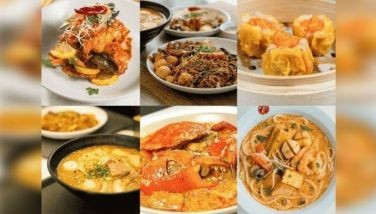Pork

We could run into supply problems with pork a few months down the road.
The supply instability will be an outcrop of the African swine fever (ASF) now happening. It manifests initially as a reluctance among consumers to buy pork products. This produces an economic chain of events.
Many hog raisers fearing the plague, especially the culling that goes with fighting it, have disposed of their stocks at a loss. After this, they have avoided investing in hogs in the meantime.
Former finance secretary Gary Teves sent me helpful notes from an ongoing online conversation about our pork supply. Thus far, the participants in this conversation do not seem very hopeful about the way the Department of Agriculture (DA) is managing the problem.
So far, what we have seen in the news are staged events where local executives and celebrities make a show of consuming pork. The purpose of these events is to assure the public that pork is safe to consume. The events are spurred by declining consumer demand because of fears about ASF contamination.
Low demand and the declining prices discourage investment in hog raising. By the time the public gets over its ASF fears, hog raisers may not have enough stocks ready to meet a spike in demand – likely to occur during the Christmas season.
By the time demand for pork rebounds, there might not be enough stocks to supply the market. This will lead to the opposite phenomenon of rising pork prices that further fuels domestic inflation.
Our currently elevated inflation rate is driven principally by food prices. This is particularly hurtful for lower income families who devote a larger portion of their household expenditure on food.
The current pork oversupply will soon turn into a shortage. When a shortage happens, we will be constrained to import more pork products to meet domestic demand. That will burden our foreign exchange and probably force the peso into a new downward spiral.
Several local governments are adding to the panic by banning transit of hogs through their jurisdictions. This adds to the logistics costs feeding into food inflation.
The abnormalities in the pork supply situation has been blamed on the failure of the DA to adequately distribute test kits at the checkpoints to facilitate transport of the products. One agricultural economist suggests that the DA quickly deploy mobile diagnostic test vans to check on hogs in the farms. Without these capabilities, local governments have used blockades as the means for checking the spread of the virus.
While all the food blockades are being set up, there seems to be no national government policies regarding them. It is urgent that the concerned government agencies articulate a clear policy regarding these blockades.
This is all very inefficient and feeds into the worsening problem. The DA has not been adequately communicating with the public about what the actual situation is and how effective its strategy to combat the infestation has been.
It is not too late for the DA to improve its communications strategy both to assure the public about the safety of consuming pork and the extent to which our authorities have been able to manage the problem. ASF will not disappear without effective state intervention. At the moment, the public is largely uninformed of the dimensions of this problem.
Decline
The problems hog raisers are currently experiencing with momentarily low demand will have implications on the general performance of our agriculture sector.
In the last quarter, our agricultural production declined by 1.6 percent. Agriculture is our weakest sector. For many years, agricultural growth lagged behind population growth. This set the stage for the greater dependence on imported food we see now.
ASF threatens to overwhelm our hog industry. If our pork production is harmed by ASF, this will lead to further declines in our agriculture, eventually pulling down our overall economic expansion.
As consumers turn away from pork products, there will be a spike in demand for chicken. As it is, we do not have enough chicken to supply the market.
San Miguel is strategically investing billions in mega chicken farms to meet rising domestic demand. But the yields from this is further down the road. In the interim, what is more likely is that the country will increase its importation of chicken.
Even with increased chicken importation, however, prices for this other source of protein will likely rise. Our large fast food outlets are now feeling the crunch. There is simply no reliable source of chicken supply.
With our pork industry teetering on the brink, a large supply gap will become evident soon. The DA should swing into action. There are too many gaps in our food situation. Importation should be a short-term solution and not a permanent dependence.
We wondered why President BBM held the agriculture portfolio for too long. No great improvement in the management of our food production happened during the time he held the agriculture portfolio. Today, more and more, we are seeing many of the vulnerabilities in our food production loom even larger.
We need to take a closer look at the efforts of the DA. It could be that too much focus has been put on false remedies such as the Kadiwa program rather than on truly effective programs that will make food production more efficient. It is not only our pork production facing decline.
- Latest
- Trending



























